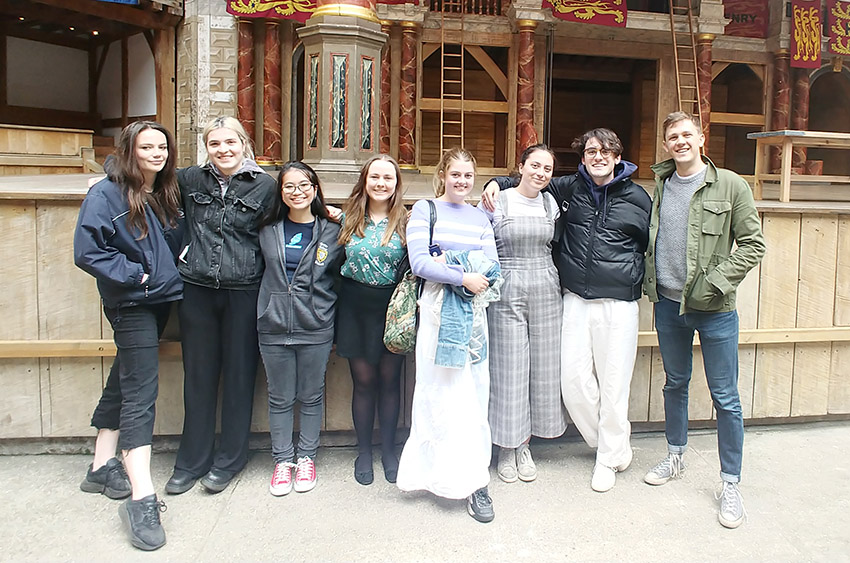Exeter students visit Shakespeare’s Globe

The group of second year English students at Shakespeare’s Globe
During Trinity term, a group of eight Exeter second year English students visited the Globe Theatre in London. The trip was organised and led by our tutor, Natasha Simonova, as an extension of the Shakespeare paper we are currently studying. This summer, the Globe has been staging special ‘Trilogy Days’, where performances of Henry IV Part 1 and Part 2 and Henry V are all run back-to-back, of which we managed to squeeze in the first two on our short day trip.
It was interesting to see the experimentation which is now almost a given within productions of Shakespeare, as most of the casting and staging paid little heed to ‘traditional’ depictions of the characters. This was true both in terms of costuming (which evoked a range of time periods, sometimes even within one particular character’s outfit), and with regards to gender and race. Despite the fact that female roles make up only 15% of Henry IV Part 1, the cast was evenly balanced in gender – for example with Sarah Amankwah playing Hal and Helen Schlesinger as Falstaff. This experimentation is in keeping with the history of Shakespeare on stage we have encountered in our classes. It has been observed that his plays are frequently used as vehicles for new ideas: what might be received as controversial in other contexts can instead be communicated with a sense of legitimacy. Thus, in this case, diversity in modern theatre can be encouraged and simultaneously bring in new interpretations of these well-known works.
While watching the performances, I sometimes found it difficult to keep up with the language in real time – a very different task to working through an Arden edition slowly with the aid of notes and a glossary. However, I was struck by the fact that it was the moments of metatheatricality and humour which were the most accessible. Schlesinger’s Falstaff is often key here in playing up audience participation, sometimes freely swiping drinks out of the hands of the audience during drunken monologues. In another moment Hal, holding a flag, walks casually through the standing crowd to the stage, making us suddenly jump to form a pathway. The ease and playfulness of these interactions made the whole performance seem more personal, breaking down the intellectual distance Shakespearean theatre can sometimes inspire. Alongside the guise of authenticity that the Globe’s architecture creates, it helped me feel an affinity to the original groundlings of the 16th and 17th centuries. Despite the perhaps obvious monopoly this one playwright has in a theatre named ‘Shakespeare’s Globe’, I now have a better sense, from an audience perspective, of the drama in this time period in general. It was a reminder to put Shakespeare back in context.
